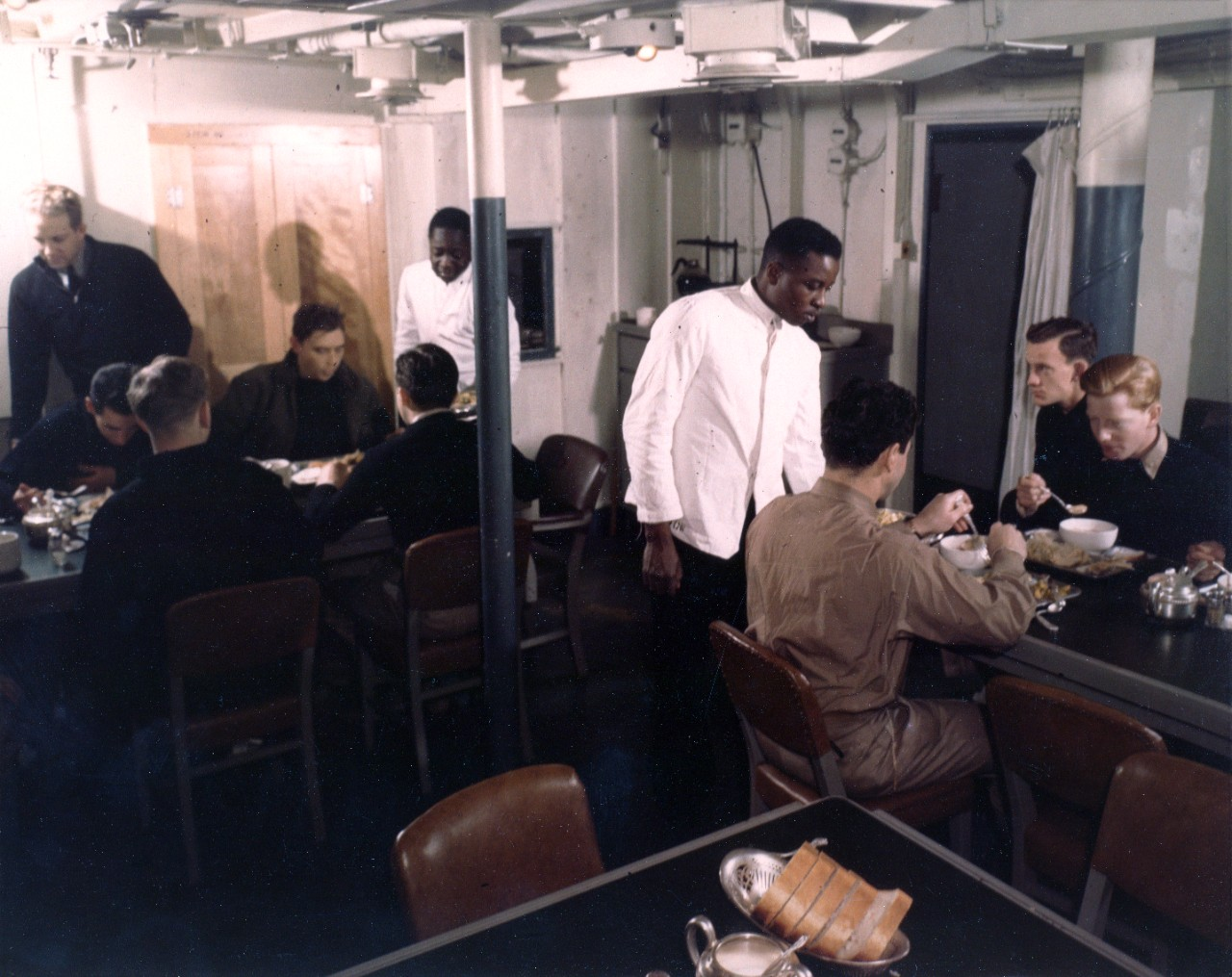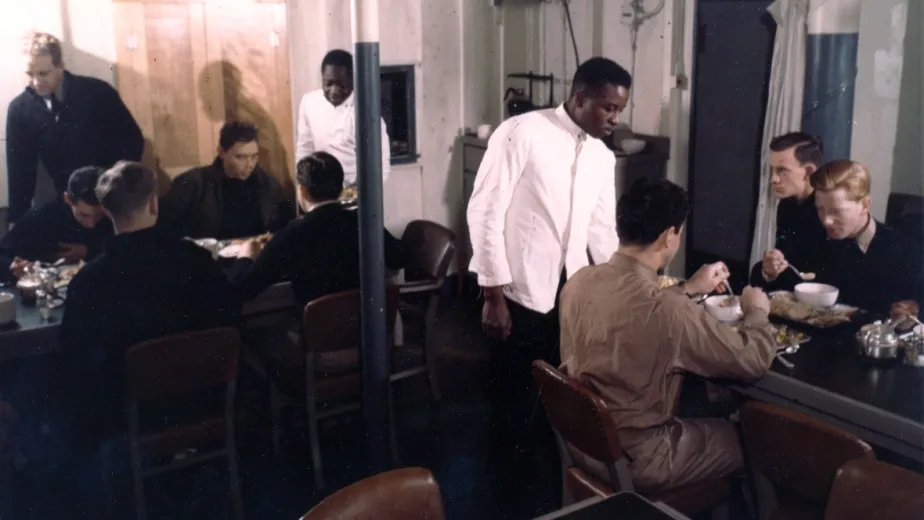
In honor of Martin Luther King Jr. Day, we reflect on the significant strides made toward equality for Black service members and defense workers during World War II. In the 1940s, Black community leaders, service members, workers and veterans challenged segregation and discrimination in the U.S. military and on the home front. Their advocacy set the stage for Dr. King and other civil rights leaders in the decades to come.
Fighting for Change
Before World War II, the U.S. Navy and other branches of the military discriminated against Black service members. Most Black men in the Navy served as stewards, cooking and cleaning for officers— including on Intrepid. Similar policies in the Army and Marine Corps relegated Black personnel to support roles and segregated units. These policies mirrored discriminatory laws in place in many states across the country. As war loomed, political and military leaders were slow to respond to calls for equal opportunity in the armed forces. 
Credit: Naval History and Heritage Command
As the country mobilized for war, activists focused their efforts on desegregating the defense industry. The March on Washington Movement, led by A. Philip Randolph, proposed a national march in 1941 to draw attention to this issue. The movement was a success: to avert the protest, President Franklin D. Roosevelt established the Fair Employment Practices Committee and issued Executive Order 8802. The order prohibited discrimination based on race, religion or national origin in the defense industry. This proposed protest was a model for the 1963 March on Washington for Jobs and Freedom, also organized by Randolph, along with Dr. King and other young civil rights leaders.
Steps Toward Equality
When the United States entered World War II, the military needed more personnel. Even so, existing military policies made it difficult for Black Americans to serve their country. Black leaders placed pressure on the armed forces and politicians in newspapers and at the ballot box.
As a result of the Black leaders' efforts, President Roosevelt pushed the Navy to desegregate in 1942. More jobs throughout the Navy were now open to Black men—as long as they served on shore. However, the Navy maintained existing restrictions on Black sailors at sea. On aircraft carriers like Intrepid and other combat ships, Black crew members were frustrated and demoralized by these discriminatory policies.
Ending Segregation in the Armed Forces
The Navy slowly opened more opportunities to Black men and women towards the end of the war and officially ended segregation in 1946. When the war ended, Black veterans spoke out about their experiences risking their lives while serving in segregated units. Continued public pressure led President Harry Truman to create the President's Commission on Civil Rights in 1946. The commission report called for reforms to protect civil rights for all Americans, including the desegregation of the armed forces.
On July 26, 1948, President Truman issued Executive Order 9981, which ended segregation in the armed forces and mandated integration across all military branches. This was a significant step forward after years of advocacy by Black organizers. When Intrepid returned to service in 1954, Black sailors lived and worked alongside white shipmates. However, the fight for equality did not end with Truman's order. Today, service members, veterans and civilian allies continue to press the military for equal opportunity for all Americans.
The journey toward desegregation throughout the U.S. military is a testament to resilience and determination in the face of adversity. It reminds us of the importance of continuing to advocate for equality and justice for all people. As we remember Dr. Martin Luther King Jr., let us honor those who fought for civil rights within our military and strive to uphold their legacy.
To learn more about sailors' experiences at sea, visit the Intrepid Museum. Tickets can be purchased here. Explore our collections at intrepid.emuseum and our digital guide.

Want to visit the museum? We would love to have you! Find out all about our offerings here and plan your trip today.

If you join our membership program you can visit the museum any time! Plus enjoy many membership perks at a discounted rate.





